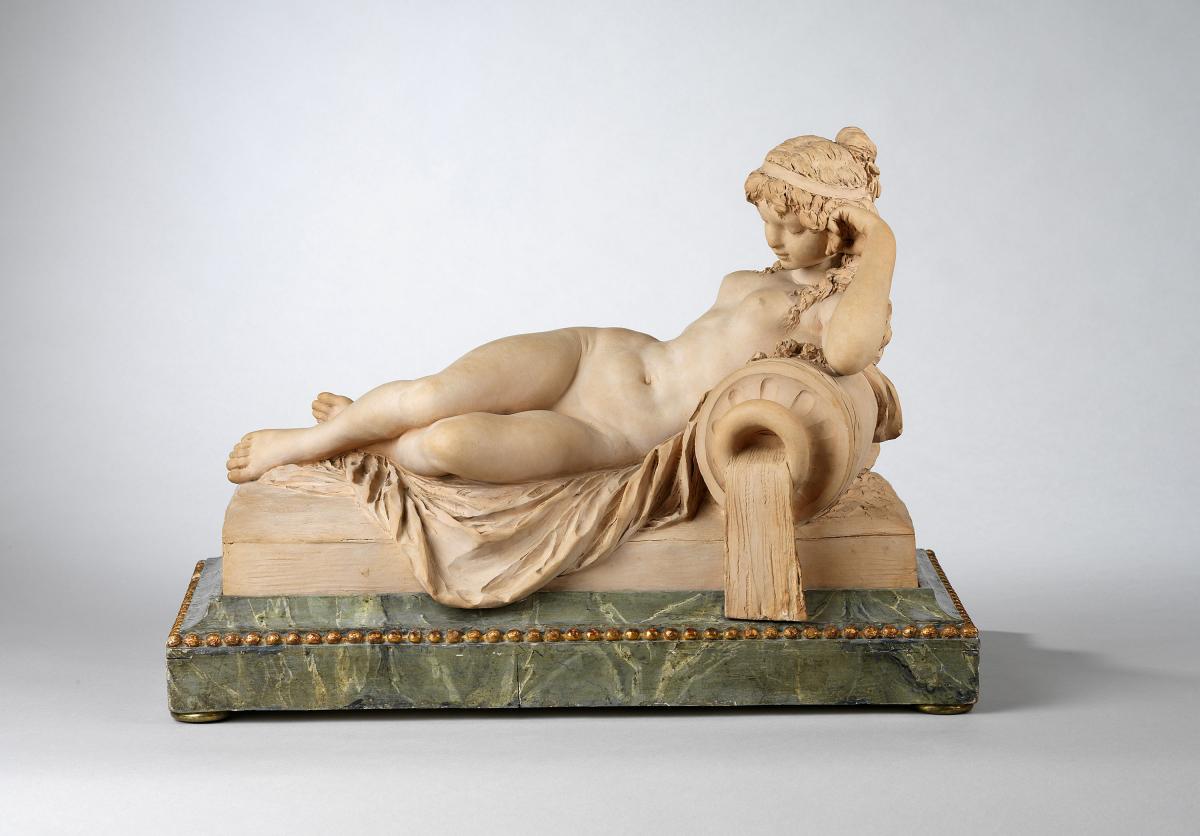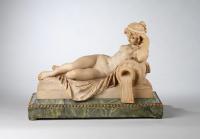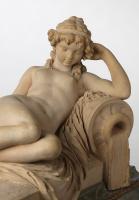


Price on application
This object is eligible for a Certificate of BADA Provenance
The BADA Standard
- Since 1918, BADA has been the leading association for the antiques and fine art trade
- Members are elected for their knowledge, integrity and quality of stock
- Our clients are protected by BADA’s code of conduct
- Our dealers’ membership is reviewed and renewed annually
- Bada.org is a non-profit site: clients deal directly with members and they pay no hidden fees
A Terracotta Figure of a Reclining Nymph, La Source after a Marble Model by Claude Michel Clodion After 1782.
The naked figure of a nymph with her head resting on her arm and her eyes closed, is reclining on drapery, and leaning against an overturned urn, which is issuing water. On marbleized wood base with a band of gilt beading. Signed Clodion.
This terracotta is after the larger than life-sized marble sculpture by Clodion, commissioned by the Baron de Besenval for the center of his salle de bains in the Hotel Besenval, which was completed in 1782.
The marble is known from an early twentieth-century photograph (op.cit., p.249) and from the original drawings for the salle de bains by the architect Alexandre-Theodore Brongniart (1739-1813) (op.cit., p. 247, cat. Nos. 50 and 51 and p. 241, fig. 126) with whom Clodion also worked on other occasions.
The erotic nature of Clodion composition added to the work’s popularity and Clodion was asked to produce smaller terracotta models. A similar but smaller 18th Century example is in the Museum of fine Arts Boston and another in the Pushkin Museum in Moscow.
Claude Michel or Clodion (1738 – 1814) was born in Nancy. He was the nephew and pupil of Lambert Sigisbert Adam and also related to the sculptor Augustin Pajou, marrying his daughter, Catherine-Flore in 1764.
He worked briefly for the sculptor Pigalle and then in 1759, won the Grand Prix de Sculpture. As a result he went in 1762 to Rome where he remained until 1771, attracting the attention of numerous patrons including Catherine II of Russia.
On his return to Paris he was an immediate success and in 1773 was accepted into the Academie, although he never became a full academician. He executed some monumental commissions, and his statue of Montesquieu is remarkable, but he mostly worked on a small scale in terracotta, producing groups of figures.
Francis Watson (1973, pp. 413-4) says of him that “he had the gift of imparting an extraordinary sensuousness and charm to figures that other neoclassic sculptors… treated with colder orthodoxy”. He certainly did not conform to the current neo-classical artistic pattern and placed an overwhelming emphasis on movement, excitement and texture.
His work was enormously popular and his workshops produced many versions of particular models, a practice which earned the disapproval of his contemporaries. He was accused of setting up a workshop “comme un simple maître de la corporation de
Saint Luc”. He also formed a company with the dealer Verrier and the bronze caster Dubois, dissolved in 1783, to produce bronze versions of his work.
Dimensions
18 x 10 x 13 in high (45.5 x 25.5 x 33 cm)The BADA Standard
- Since 1918, BADA has been the leading association for the antiques and fine art trade
- Members are elected for their knowledge, integrity and quality of stock
- Our clients are protected by BADA’s code of conduct
- Our dealers’ membership is reviewed and renewed annually
- Bada.org is a non-profit site: clients deal directly with members and they pay no hidden fees



